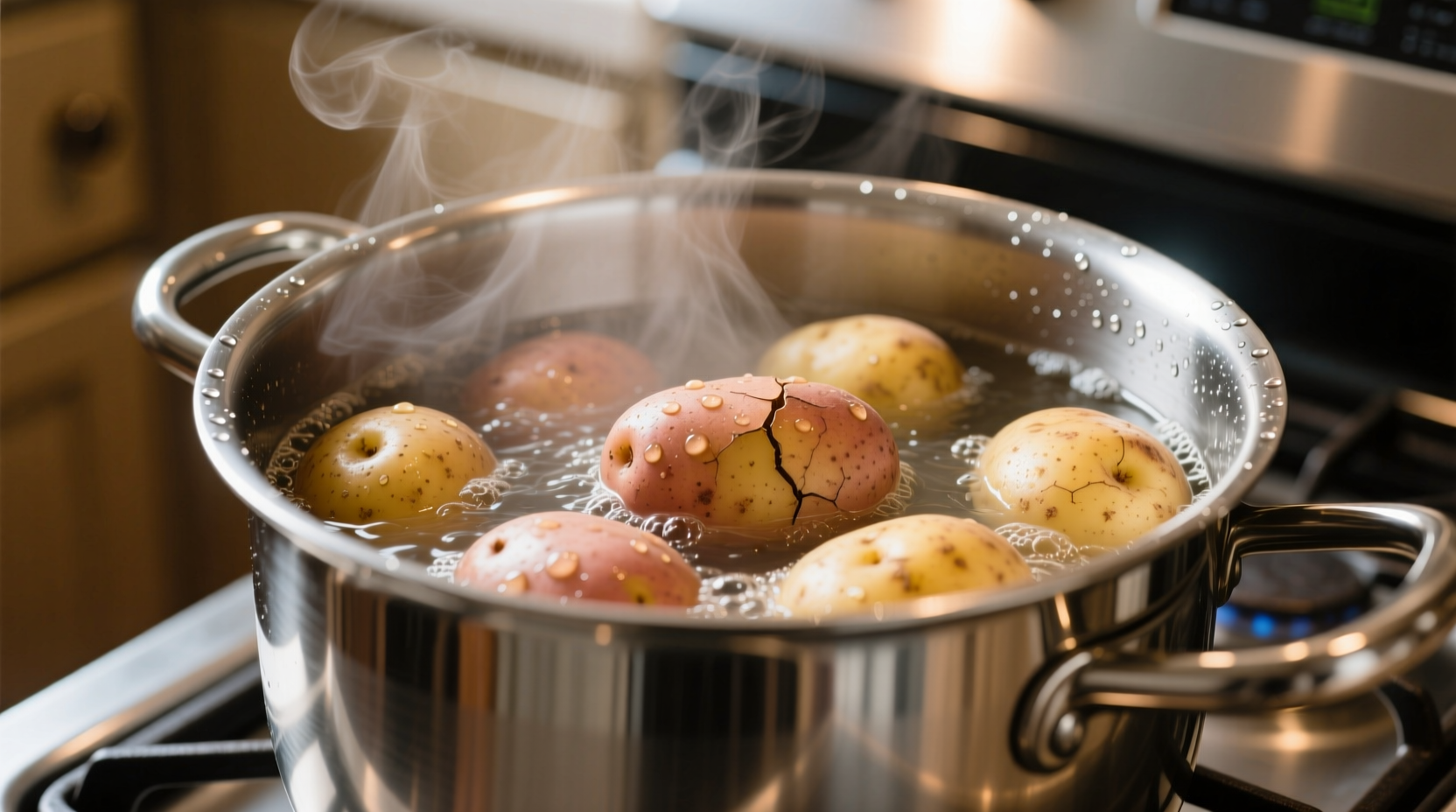Perfect Potato Boiling: Science-Backed Timing Guide
Getting boiling times right transforms potatoes from gluey disasters to perfectly tender components. Whether you're making mashed potatoes, potato salad, or a simple side dish, precise timing ensures optimal texture every time. Let's break down exactly how long to boil potatoes based on your specific needs.
Why Potato Boiling Times Vary
The "how long do you boil a potato" question has no single answer. Several factors determine cooking time:
- Potato variety - Waxy potatoes (like Yukon Gold) cook faster than starchy varieties (like Russets)
- Size and shape - Cubed potatoes cook in half the time of whole potatoes
- Starting temperature - Cold potatoes added to boiling water take longer than room-temperature ones
- Altitude - Higher elevations require longer cooking times due to lower boiling points

Boiling Time Reference Table
| Potato Type | Preparation | Boiling Time | Internal Temp |
|---|---|---|---|
| Russet (starchy) | 1-inch cubes | 15-20 minutes | 205°F (96°C) |
| Russet (starchy) | Whole medium | 25-30 minutes | 205°F (96°C) |
| Yukon Gold (medium) | 1-inch cubes | 12-18 minutes | 200°F (93°C) |
| Red (waxy) | 1-inch cubes | 10-15 minutes | 195°F (91°C) |
| Red (waxy) | Whole small | 20-25 minutes | 195°F (91°C) |
This data aligns with recommendations from the National Center for Home Food Preservation at the University of Georgia, which confirms that potatoes reach optimal tenderness between 195-205°F (91-96°C).
Step-by-Step Perfect Potato Boiling Method
Preparation Matters Most
Before you even turn on the burner, proper preparation sets the stage for perfect results:
- Wash thoroughly - Remove all dirt with a vegetable brush
- Peel (optional) - Peeling before boiling prevents water absorption that can make potatoes soggy
- Cut uniformly - Consistent size ensures even cooking (1-inch cubes are ideal for most applications)
- Cold water start - Place potatoes in cold water rather than boiling water for more even cooking
The Boiling Process
Follow these precise steps for foolproof results:
- Use a large pot with enough water to cover potatoes by 1 inch
- Add 1-2 tablespoons of salt per quart of water (salted water seasons from within)
- Bring to a rolling boil over high heat
- Reduce to a gentle simmer (vigorous boiling breaks up potatoes)
- Start timing once water returns to a simmer after adding potatoes
- Check for doneness 5 minutes before expected finish time
How to Test for Perfect Doneness
Don't rely solely on timing—use these foolproof tests:
- Fork test - A fork should slide in with slight resistance (not completely effortless)
- Knife test - For whole potatoes, a thin knife should meet slight resistance in the center
- Squeeze test - Carefully squeeze a potato cube; it should yield slightly but hold shape
Overcooked potatoes become waterlogged and fall apart, while undercooked potatoes have a hard, starchy center. The ideal texture varies by application:
- Mashed potatoes - Cook until fork slides in effortlessly
- Potato salad - Slightly undercook to maintain shape after cooling
- Roasting after boiling - Cook until just tender for best crisp exterior
Avoid These Common Boiling Mistakes
Even experienced cooks make these errors that ruin potato texture:
- Starting with boiling water - Causes uneven cooking (exterior overcooks before interior is done)
- Overcrowding the pot - Lowers water temperature and extends cooking time
- Skipping the salt - Results in bland, one-dimensional flavor
- Boiling too vigorously - Breaks up delicate potato varieties
- Not testing early enough - Leads to overcooking while waiting for full time
Special Considerations for Different Applications
Adjust your boiling time based on your end use:
- For mashed potatoes - Russets need full 20-25 minutes for cubes to achieve fluffy texture
- For potato salad - Red potatoes benefit from 2-3 minutes less cooking to maintain shape
- For soups and stews - Undercook by 3-5 minutes since they'll continue cooking in the broth
- High altitude cooking - Add 5-10 minutes to standard times above 3,000 feet elevation
According to research from the Oregon State University Extension Service, waxy potatoes maintain their structure better when cooked to 195°F (91°C), while starchy varieties need the higher 205°F (96°C) temperature to fully gelatinize their starch for optimal mashing.
Next Steps After Boiling
Proper handling after boiling affects final texture:
- Drain immediately - Prevents overcooking from residual heat
- Return to warm pot - Shake gently over low heat for 1-2 minutes to evaporate excess moisture
- Season while warm - Butter and seasonings absorb better into hot potatoes
- Cool properly for salads - Spread in single layer to prevent steaming and becoming mushy
When Boiling Isn't Best: Alternative Cooking Methods
While boiling works for many applications, consider these alternatives:
- Steaming - Preserves more nutrients and prevents waterlogging (reduce time by 2-3 minutes)
- Microwave - Faster for small quantities (8-12 minutes for 2 medium potatoes)
- Pressure cooking - Cuts time in half (7-10 minutes for perfect tenderness)
For the most accurate timing guidance across different potato varieties, the University of Arizona Cooperative Extension maintains detailed cooking charts based on extensive food science testing.
Conclusion: Master Your Potato Timing
Perfectly boiled potatoes require understanding both the science and practical techniques. By matching your boiling time to potato variety, size, and intended use, you'll consistently achieve the ideal texture. Remember to start checking for doneness early, as potatoes can go from underdone to overcooked in just a few minutes. With these guidelines, you'll never serve mushy or hard potatoes again.











 浙公网安备
33010002000092号
浙公网安备
33010002000092号 浙B2-20120091-4
浙B2-20120091-4